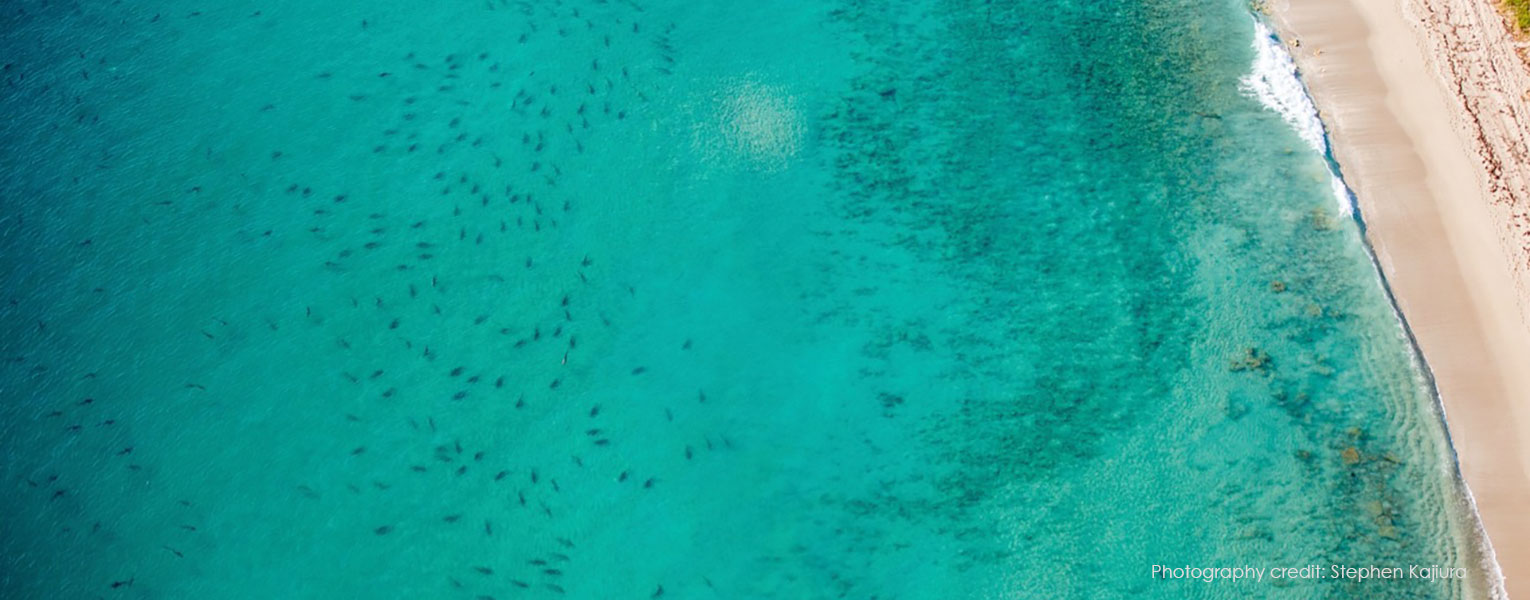5/21/2023
World Fish Migration Day
FAU Scientists Study the Sharks Migrating along the Florida Coast
Bethany Augliere
Every fall, thousands of blacktip sharks migrate southward to the southeast Florida coast to escape the colder temperatures. It’s the largest migration in U.S. coastal waters, according to Stephen Kajiura, Ph.D., professor, Charles E. Schmidt College of Science.
Kajiura has studied these sharks since 2010, counting sharks from planes and drones, and monitoring them from boats to record size, sex and tag individuals to track movements.
He and his team of graduate student researchers, which includes recent graduate Beth Bowers, Ph.D., have previously reported as many as 15,000 blacktip sharks on any given day, with the densest aggregation of sharks reported at more than 2,100 sharks per square kilometer.
For her doctoral work, Bowers studied the distribution and environmental drivers of movement of blacktip sharks, as well as the differences between males and females. “The most interesting thing I have found is that males travel all the way from Palm Beach, Fla., to Long Island, N.Y. Female blacktip sharks don’t travel as far north as the males,” she said. Females reproduce every other year and so one reproductive year is followed by a year of rest. Depending on their reproductive state, females also appear to travel different distances, she added. For instance, pregnant females stay close to the nursery grounds in Georgia and South Carolina where they give birth and resting females travel farther north.
Monitoring migration is important because of changing environmental conditions, said Bowers, adding that the aggregation locations may be shifting north because of global climate change. “The greatest concern with global climate change is that it is happening too quickly for these populations to adapt to the environment,” Bowers said. “If you want to preserve the sharks and this fascinating phenomenon, you should explore ways in which you can lower your carbon emissions, such as using solar power, insulating your home, driving a hybrid or electric vehicle, or shopping for sustainable products.”
Sharks have been migrating to southeast Florida for thousands of years. The very recent change in water temperature means that we will no longer have this large seasonal influx of these top predators every year, Kajiura said. As a result, the prey fish populations will not receive an annual culling — or spring cleaning — when the top-level predators fail to arrive. “This could have cascading effects throughout the entire ecosystem, and we simply don't know how this may affect populations around here.”
If you would like more information, please contact us at dorcommunications@fau.edu.
